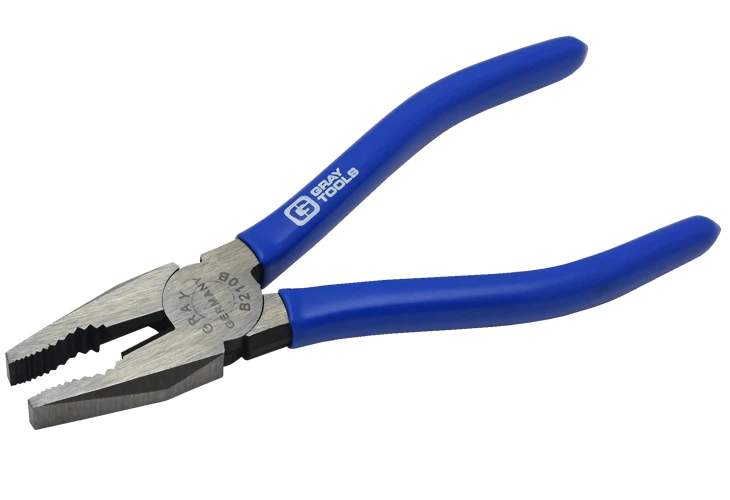
A wrench and joint pliers (also known as slip-joint pliers or adjustable pliers) are both hand tools used for gripping and turning objects, but they have some key differences in design and functionality:
1.Jaw Design:
Wrench: A wrench typically has a fixed jaw and an adjustable jaw. The adjustable jaw can be moved to fit different sizes of nuts, bolts, or other fasteners. The jaws of a wrench are usually smooth and designed to fit specific fastener shapes, such as hexagonal or square nuts.
Joint Pliers: Joint pliers have two jaws that come together to grip an object. The jaws have serrated or grooved surfaces that provide a better grip on various objects. Joint pliers are designed to provide a versatile gripping capability for a wide range of objects, including fasteners, pipes, or irregularly shaped items.
2.Mechanism:
Wrench: A wrench typically uses a fixed pivot point at the end of the handle, allowing for controlled turning and torque application. The adjustable jaw can be adjusted to fit the size of the fastener, providing a secure grip.
Joint Pliers: Joint pliers have a sliding pivot point mechanism that allows the jaws to be adjusted to different positions along the length of the tool. This adjustable feature provides versatility in terms of the size of objects that can be gripped.
3.Usage:
Wrench: Wrenches are primarily used for turning or tightening/loosening fasteners like nuts, bolts, or screws. They are commonly used in automotive, plumbing, construction, and mechanical applications.
Joint Pliers: Joint pliers are more versatile and can be used for gripping, holding, bending, or twisting various objects. They are commonly used in plumbing, electrical work, general repairs, and other applications where a secure grip is needed.
4.Versatility:
Wrench: Wrenches are specialized tools designed specifically for turning fasteners. They come in various types, such as open-end, box-end, combination, adjustable, or socket wrenches, each suited for specific fastener types and sizes.
Joint Pliers: Joint pliers are more versatile tools that can be used for gripping a wide range of objects beyond fasteners. They can be adjusted to accommodate different sizes and shapes, making them suitable for tasks like gripping pipes, removing stubborn caps, or holding irregularly shaped objects.
In summary, wrenches are primarily designed for turning and tightening/loosening fasteners with specific shapes, while joint pliers are versatile tools used for gripping and holding various objects. The choice between a wrench and joint pliers depends on the specific task and the type of object being worked on.